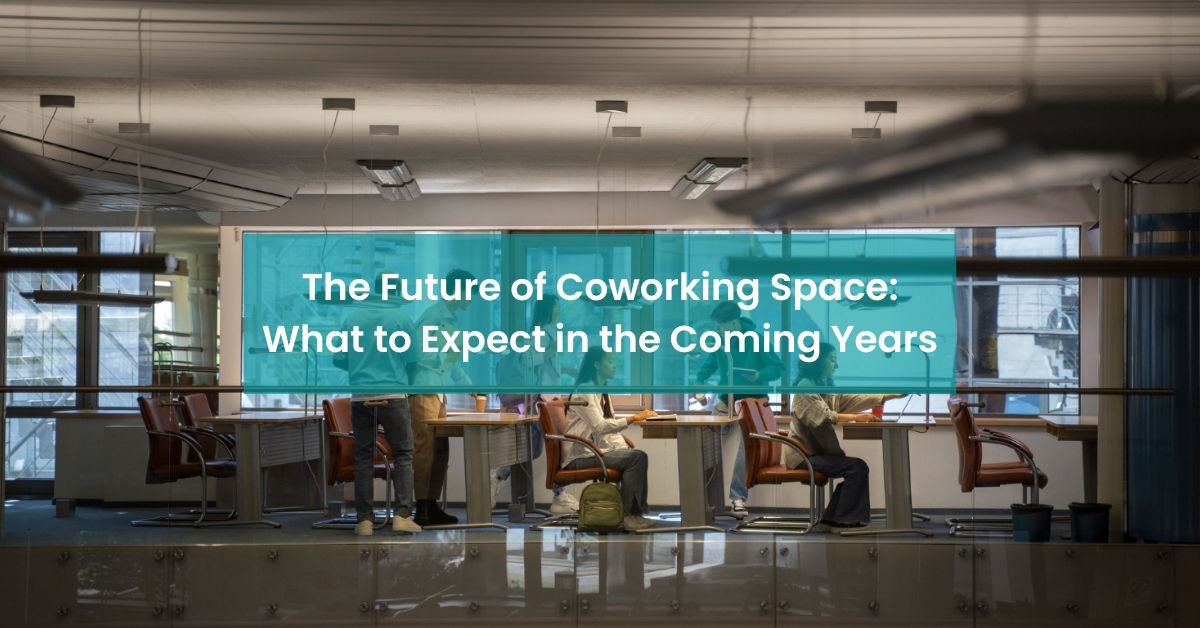
As the pandemic struck, everything came to a standstill. It is obvious that Coworking Space were unable to prevent this catastrophe as well leading to the abandonment of the concept. Nonetheless, one benefit of co-working places was the evolution of working techniques in lockdown. The style of working, employment, and everything regarding an office environment was specially altered. It opened doors to the concept of hybrid working and remote working which happen to improve efficacy and efficiency. The post-pandemic era will hopefully provide many benefits together with effectively brainstorming workplaces all over the globe. After the lockdown, people started looking for alternative employment arrangements that offered flexibility, affordability, and a superior working environment. All of this merely brought them to the coworking space’s entrances.
There are many trends on the horizon, whether they are related to architecture, technology, or even changing the way we think about coworking spaces. This paves way for the few trends that can be expected in the coming future. One such feature is coworking as a service. The shifting nature of shared office spaces, which are moving away from being seen as just a place and towards being seen as a service, is one of the most recent trends in coworking. Offering coworking as a service entails providing users with a variety of additional perks in addition to a physical workspace. These advantages include, among others, access to venture finance, mentorship development, and 24-hour keycard access. This innovation serves as the foundation for many of the trends that come after it. For instance, offering freelancers a workspace alone is no longer sufficient. Because of the evolution of coworking spaces, the individuals who use them, and their value, teams, and users are now demanding services in addition to a workspace.
This leads us to yet another significant trend in coworking which is building deeper connections and not just networking per se; it will allow space for more intimate communities. The capacity of coworking spaces to foster communities is one of their major advantages. The ability of communities to assist in rebuilding people’s lives is more important than ever as we start to move past the pandemic. In the future, coworking spaces will serve as key hubs for community reconstruction. A coworking space may foster a sense of community by providing amenities like lunch meetings, yoga courses, and workshops on meditation and mindfulness.
Expanding access to corporate employees is a further planned innovation for coworking spaces. Coworking spaces in Noida are in a great position to provide workspace in dispersed places as urban office premises have become increasingly vacant and many employees have started working from home. Large firms that have embraced a hybrid or hub-and-spoke work model will be able to use suburban coworking spaces as a resource. In order to better meet the need for a “third space,” firms may occasionally establish permanent employment arrangements with their employees at coworking spaces.
The emergence of specialty coworking spaces as a part of broader coworking networks is a key development for coworking spaces. Specialized coworking spaces feature areas for certain subgroups. These include coworking spaces run by women, ones that emphasize technology, ones that emphasize wellness, and ones that focus on the creative work of artists. By providing the tools and resources they require, coworking operators may embrace unique communities. Sound booths and podcasting equipment, for instance, can be found in artist-creative coworking spaces. These special places foster closer-knit communities and are more resistant to external pressures.
Coworking spaces’ ongoing innovation is another impending trend. Office buildings in San Francisco are currently occupied at roughly 40% of their pre-pandemic levels. Due to the global nature of this occupancy issue, coworking spaces have many options to intervene and revitalize these vacant office buildings. In addition to taking advantage of this chance to lure employees back to the workplace, coworking office spaces will continue to be among the most avant-garde and beautifully constructed architectural environments. By placing workers in the city centers, these innovations will combine open-space principles with private conference suites, phone areas, and phone booths.
Further member privileges will offer tactical advantages as coworking continues to develop. In these challenging economic times, a lot of small business owners have been forced to rely on small business loans. On average, community banks have approval rates close to 50%. Hence, providing inexpensive or even free perks will aid coworking operators in keeping more independent contractors.
Pet-friendly workplaces, local store discounts, free parking, book clubs, and 1-on-1 direct mentoring are a few viable alternatives. These low-cost, high-value advantages significantly increase the value of coworking spaces and will become increasingly important as the sector develops.
As an expected trend for coworking in the future, rising technological use is also anticipated to pick up speed. Coworking spaces are improved by technology since it makes them much more powerful and effective. Access cards and NFC phone-enabled devices now make it possible for 24-hour venues to thrive without personnel while also offering more flexible hours than early coworking spaces that required staffing. Digital technologies can totally automate meeting room reservations and offer space monitoring in case of any issues. Staffing requirements can be decreased by using automated invoicing systems. This implies that when coworking spaces adopt more technology, they will become more efficient, which is why, in 2023, every operator should prioritize tech adoption.
Finally, the development of multi-location coworking networks is the final trend that will be seen in 2023 and beyond. Members of standalone coworking spaces will be able to access different spaces under a single coworking brand, providing them with more alternatives and enabling them to work closer to home. These networks resemble franchises.
Conclusion
It should go without saying that the culture and trend of co-working spaces are here to stay and will determine the direction of the commercial sector in the future. These co-working spaces have a promising future, especially in India, and the growing trend is expected to continue in the next few years. Coworking spaces are gradually becoming the go-to destination for professionals to congregate; they are no longer the casual office spaces offered in office buildings. Coworking spaces are positioned to increase in value in the post-pandemic environment as they develop to satisfy the needs of hybrid teams and entrepreneurs on a worldwide scale.






